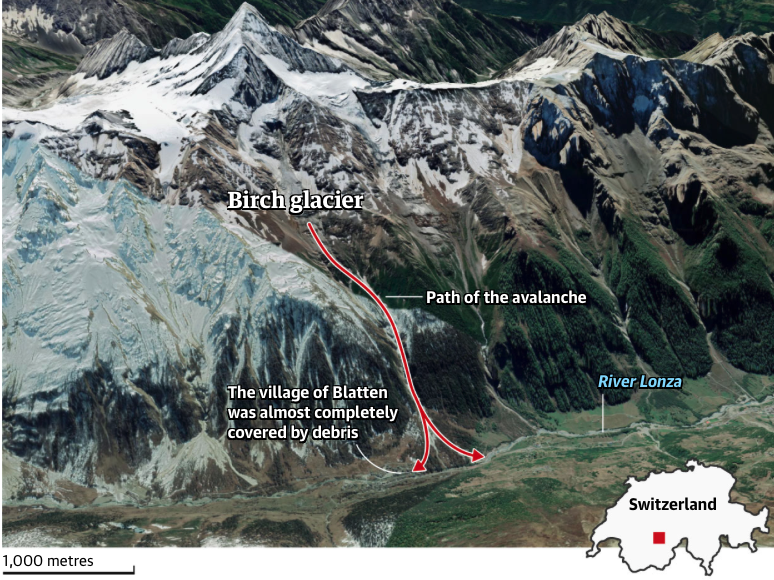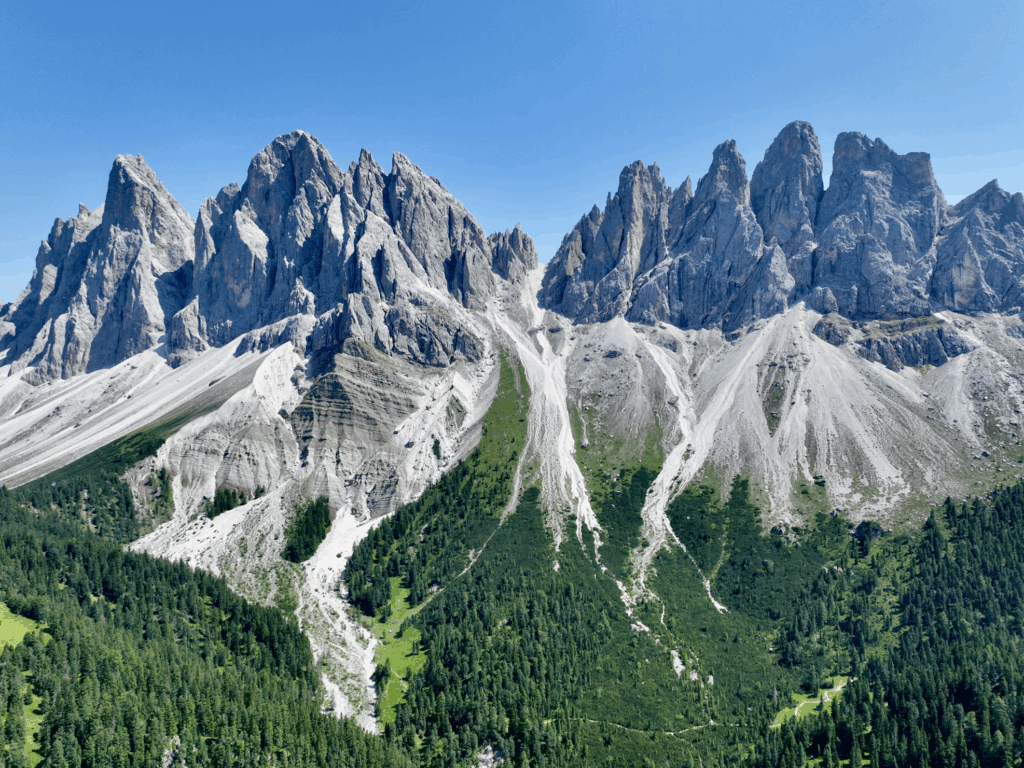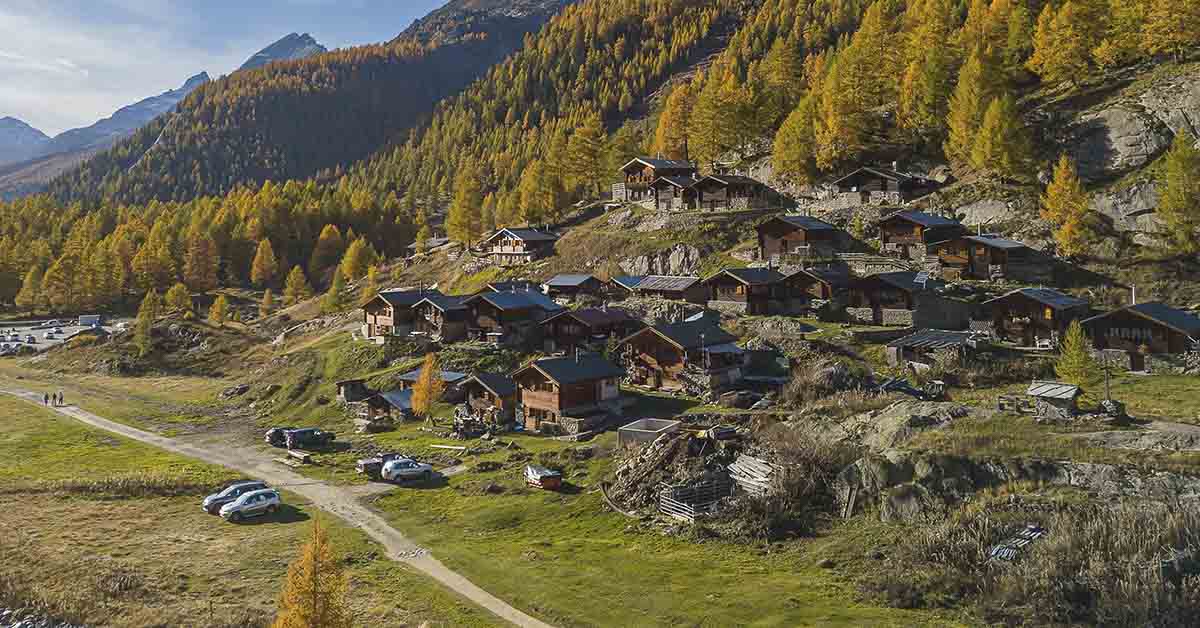On May 29, the village of Blatten in Switzerland disappeared under an avalanche of ice and rock when a glacier above it collapsed. Within just two minutes, 9 million tons of debris came tumbling down the mountainside, burying an ancient Alpine settlement. The impact was so powerful it registered as a 3.1-magnitude earthquake, making this one of the nation’s biggest landslides. When Swiss President Karin Keller-Sutter visited the scene, she called it “apocalyptic,” saying the village was “practically leveled” with “nothing visible anymore.
The Village That Vanished in Switzerland

For centuries, around 300 residents called Blatten home. The settlement held homes dating back hundreds of years, including a house from 1654 that had weathered wars and natural disasters for over 370 years. But on May 19, officials forced all 300 residents to abandon their ancestral homes with whatever they could carry. Nine days later, the avalanche buried the entire settlement under tons of ice and rock, erasing centuries of Alpine life in just two minutes.
The Mountain Breaks Apart

High above Blatten, the Birch Glacier was carrying a deadly load. Over several weeks, rockfall from Kleines Nesthorn mountain had deposited nine million tons of debris on the ice. Under this enormous weight, the glacier began showing signs of stress. Cracks appeared across the ice surface, and the entire sheet started moving faster than normal. Meanwhile, the mounting pressure created deep fractures that weakened the glacier’s structure. By Wednesday at 3:30 PM, the inevitable happened. The overloaded glacier gave way, releasing an enormous mass of rock and ice down the mountainside toward the village.
Earthquake-Strength Impact

The collapse shook the earth with the force of a 3.1 magnitude earthquake. Swiss Seismological Service recorded it as one of the largest landslides in the country’s history. The massive flow of rock and ice rocketed across the valley floor and surged up the opposite mountainside like a wave of destruction. Within minutes, the avalanche traveled over a mile while its thunderous roar carried to neighboring villages. Computer scientist Jan Beutel watched the catastrophe happen in real time. Pixels suddenly erupted across the top half of his screen. “I was in awe,” he said. Miles away, the sound carried across the valley to neighboring villages, where residents said it reminded them of a bomb going off.
The Evacuation That Saved Lives

Scientists detected the first warning signs on May 14. Five days later, officials issued evacuation orders for the entire village. All 300 residents had to abandon their homes, packing only what they could carry. Even the animals needed to be rescued. Helicopters airlifted sheep and cattle to safety before the danger zone became too unstable. The evacuation wrapped up nine days before the mountain collapsed. The early warning system worked perfectly. Not a single person died in their home that day. Officials estimate the quick response saved 299 lives. However, one 64-year-old man remains missing, and search teams continue their efforts to find him.
One Person Still Missing

A 64-year-old sheep farmer remains missing from the disaster. His barn sat outside the evacuation zone, in an area that wasn’t considered at immediate risk. When the glacier came down, it carried more than just ice and rock. Melted water from deep inside created a wall of mud that spread far beyond anyone’s predictions. The farmer was likely tending his animals when the mountain gave way. Despite intensive searches, rescue teams have found no trace of him. Officials suspended operations Thursday because the unstable pile of debris makes any search attempts too dangerous. His disappearance shows how even the areas marked as safe zones couldn’t protect against nature’s full fury.
Switzerland’s Lost Village

Before the disaster, the village looked like a postcard with neat houses nestled among green fields and wildflowers dotting the meadows. After the collapse, a gray wasteland stretches across the valley. The debris field spans over a mile, burying everything beneath rock and mud. Only a few house peaks pierce through the destruction. Today, no one would guess that 300 people once called this place home.
The Water Threat

The landslide blocked the Lonza River completely. Water is backing up behind the debris, creating a dangerous new lake. If this natural dam breaks, it could flood villages downstream. Authorities evacuated 16 more people from two communities while the Swiss army emptied a downstream dam as a safety measure. Engineers monitor water levels around the clock. Officials warn of “torrential lava flow” if the river overflows, their way of describing the destructive force that would follow.
Switzerland’s Climate Connection

Climate change is melting frozen ground called permafrost. This underground ‘glue’ normally holds mountain rocks together. As it melts, mountainsides become unstable and collapse under their own weight. Glaciologist Andrew Mackintosh was surprised by what he witnessed firsthand. ‘I’ve been astonished by the large-scale collapse. This is not something that I anticipated.’ Meanwhile, Switzerland lost 4% of its glacier volume in 2023, marking the second-biggest decline in a single year. The previous year, it had lost 6% in 2022. Even experts didn’t predict this rapid acceleration would happen.
A Global Warning

What happened to Blatten is part of a troubling global pattern. Resident Stéphane Genoud said “The mountain is coming down. We are the canary in the coal mine. We are directly feeling the impact.” Similar disasters have happened worldwide. Russia’s Kolka-Karmadon glacier collapse killed over 120 people in 2002. Italy lost 11 people when the Marmolada glacier collapsed in 2022. Mountain communities from the Himalayas to the Andes face growing threats. This tragedy shows how quickly climate change can destroy communities that survived for centuries. What happened here could happen anywhere mountains meet ice. The village now exists only in memory, serving as a clear warning of our changing world.
Read More: Scientists Report Rare Ice Growth in Antarctica After Years of Steady Decline

